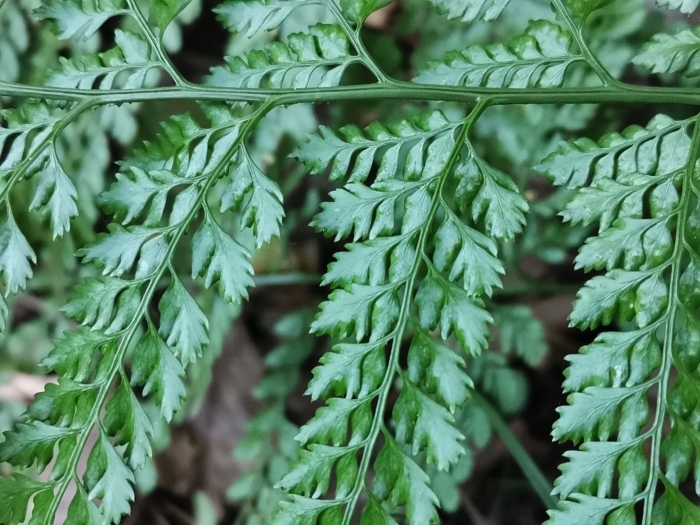Upside-Down Fern
(Arachniodes standishii)
Upside-Down Fern (Arachniodes standishii)
/
/

harum.koh
CC BY-SA 4.0
Image By:
harum.koh
Recorded By:
Copyright:
CC BY-SA 4.0
Copyright Notice:
Photo by: harum.koh | License Type: CC BY-SA 4.0 | License URL: http://creativecommons.org/licenses/by-sa/4.0/ | Rights Holder: harum.koh | Publisher: iNaturalist | Date Created: 2020-10-31T14:46:06-07:00 |






















Estimated Native Range
Summary
Arachniodes standishii, commonly known as Upside-Down Fern, is an evergreen fern native to the cool, moist, and shaded forest floors of Taiwan, Japan and Korea. It typically grows to a height of 1-2 feet (0.3-0.6 meters) and a width of 1-3 feet (0.3-0.9 meters), featuring glossy, dark green fronds that have a distinctive holly-like appearance. The fronds are triangular and the plant’s common name derives from the peculiar way the tips of the fronds point upwards, as if the fern were upside-down. Flowering is not applicable to ferns, but the fronds’ unique structure and year-round presence provide visual interest.
Upside-Down Fern is valued for its lush foliage and adaptability to low-light conditions, making it an excellent choice for shaded gardens, woodland plantings, and as a ground cover under taller plants. It thrives in moist, well-drained, humus-rich soil and benefits from regular watering, though it is relatively drought-tolerant once established. This fern is not known for major disease or pest issues, but it can suffer from root rot if the soil is too wet. It is not invasive and does not have aggressive roots, making it a safe choice for gardeners seeking a low-maintenance plant.CC BY-SA 4.0
Upside-Down Fern is valued for its lush foliage and adaptability to low-light conditions, making it an excellent choice for shaded gardens, woodland plantings, and as a ground cover under taller plants. It thrives in moist, well-drained, humus-rich soil and benefits from regular watering, though it is relatively drought-tolerant once established. This fern is not known for major disease or pest issues, but it can suffer from root rot if the soil is too wet. It is not invasive and does not have aggressive roots, making it a safe choice for gardeners seeking a low-maintenance plant.CC BY-SA 4.0
Plant Description
- Plant Type: Fern
- Height: 1-2 feet
- Width: 1-3 feet
- Growth Rate: Moderate
- Flower Color: N/A
- Flowering Season: Non-Flowering
- Leaf Retention: Evergreen
Growth Requirements
- Sun: Part Shade, Full Shade
- Water: Medium
- Drainage: Fast
Common Uses
Border Plant, Deer Resistant, Low Maintenance, Potted Plant, Rock Garden
Natural Habitat
native to the cool, moist, and shaded forest floors of Taiwan, Japan and Korea
Other Names
Common Names: Ryomen-Shida
Scientific Names: , Arachniodes standishii, Rumohra standishii, Polystichum standishii, Polystichopsis standishii, Dryopteris standishii, Polystichum staudishii, Aspidium laserpitiifolium, Arachniodes standishii f. laserpitiifolia, Byrsopteris standishii
GBIF Accepted Name: Arachniodes standishii (T.Moore) Ohwi